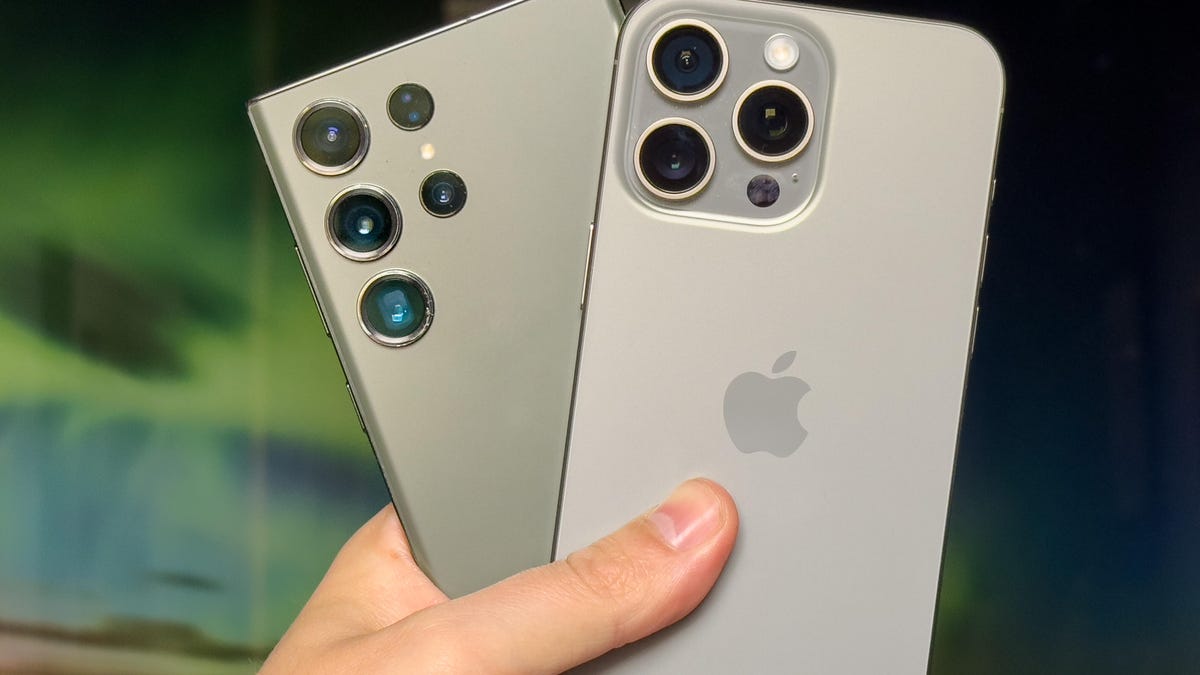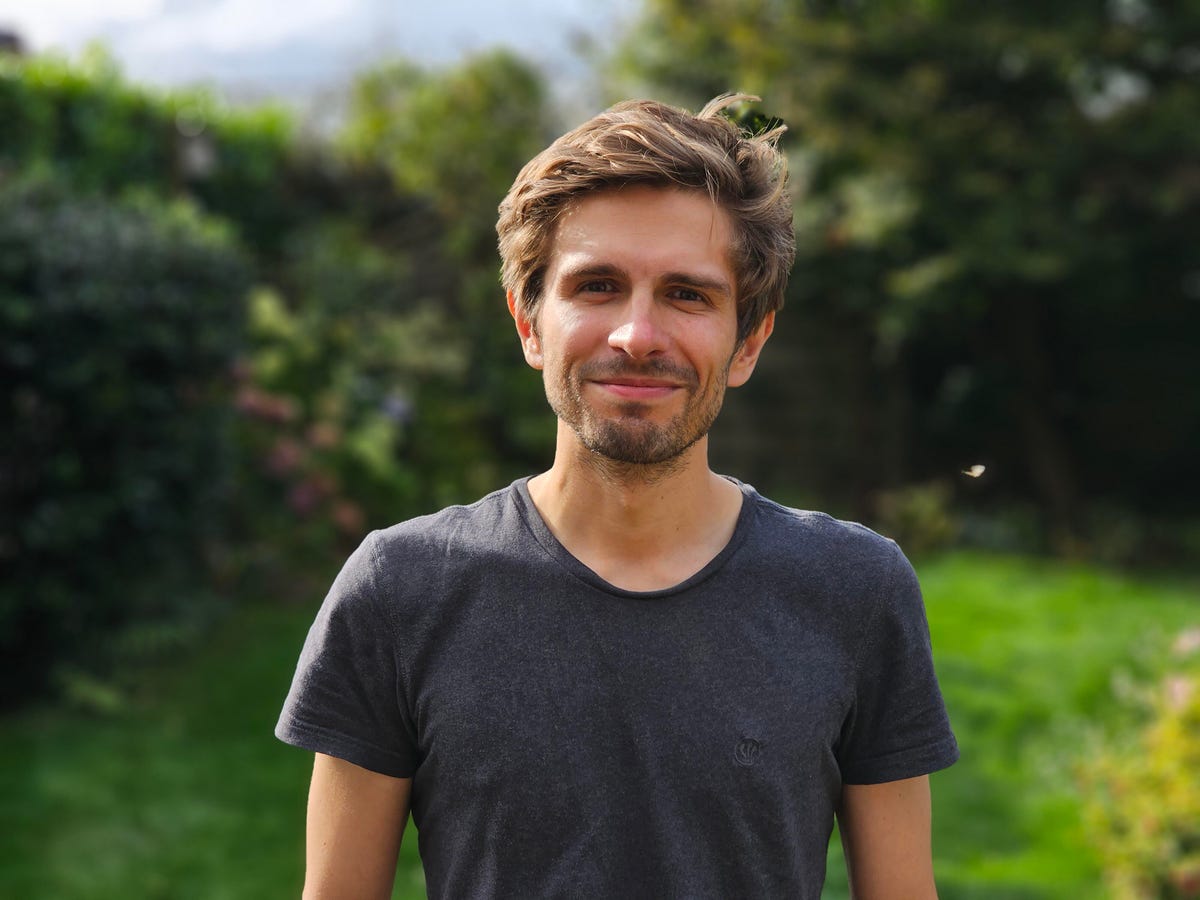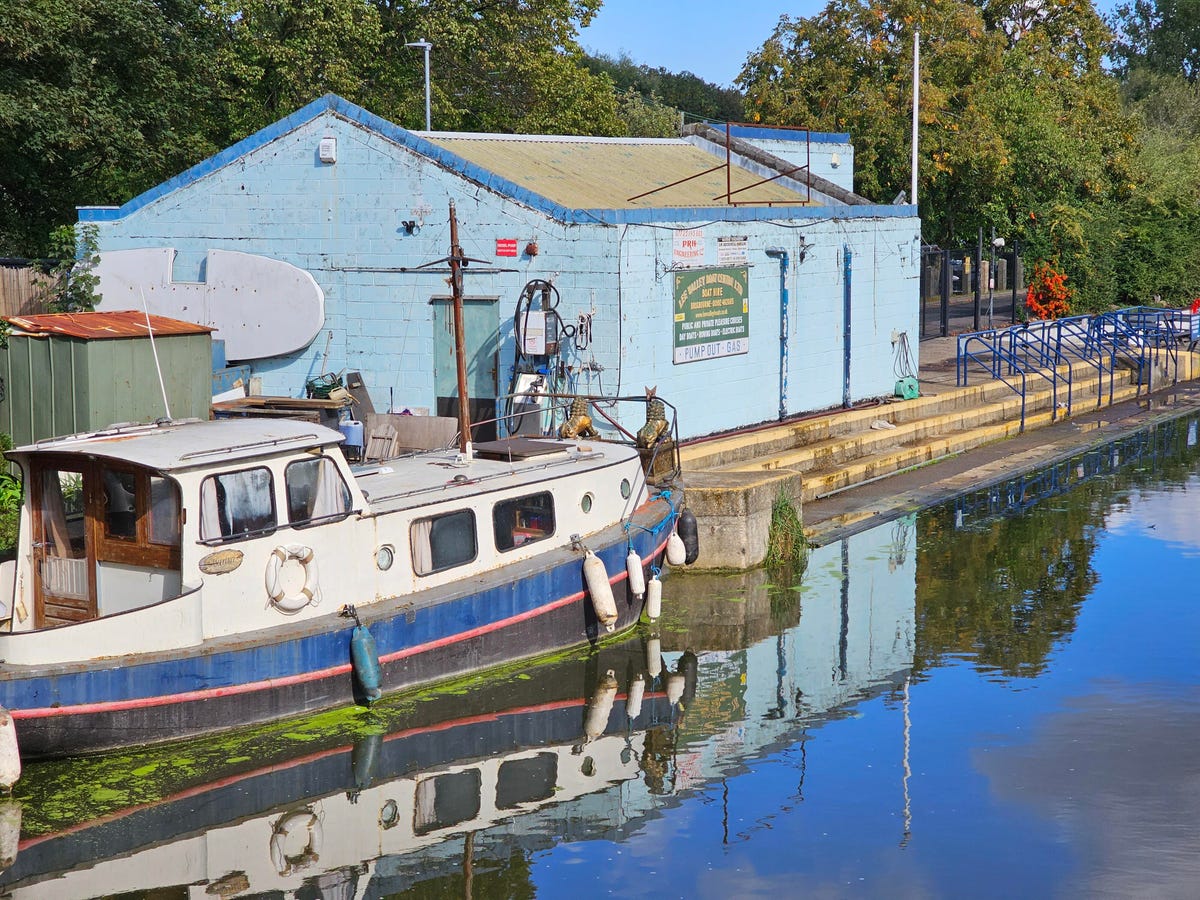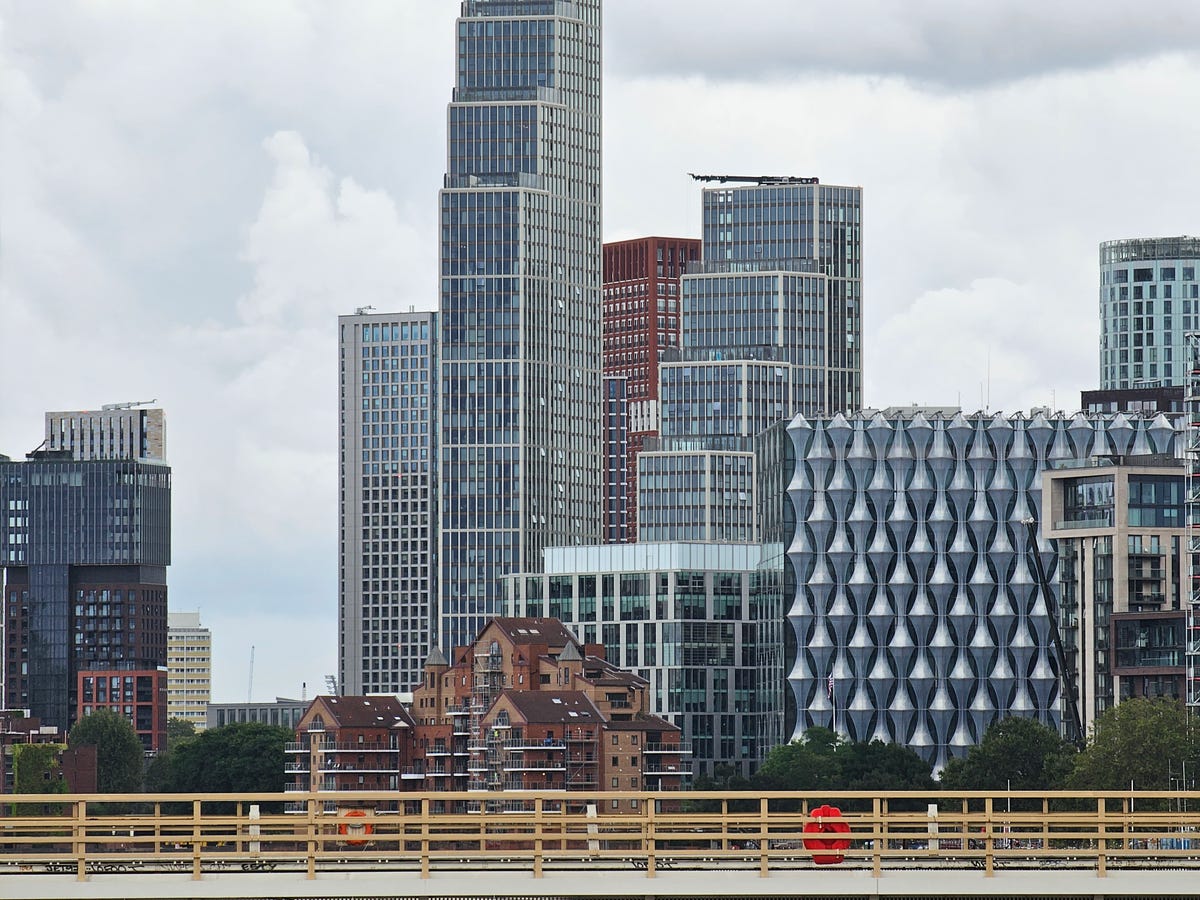Technologies
iPhone 15 Pro Max Camera vs. Galaxy S23 Ultra: Smartphone Shootout
We put Samsung’s and Apple’s best phones up against each other to see which can take better photos.

The iPhone 15 Pro Max packs one of the most capable cameras seen on any phone. Its main, 48-megapixel image sensor takes stunning photos, while its telephoto lens has been bumped up to 5x, making it great for taking more zoomed-in shots of distant subjects. But it isn’t the only great camera phone to buy. Samsung’s Galaxy S23 Ultra has remained one of our top picks for photographers since it launched earlier this year. It can take great images under any conditions, and its 10x zoom offers even more creative options.
But how do these two phones compare when it comes to photo-shooting prowess? To find out, I put both devices through their paces in a series of tests in London and Edinburgh, including night mode imagery, zoom tests and portrait mode challenges.
Read more: Best camera phone to buy in 2023
The long story short is that both phones are incredibly capable when it comes to taking photos that’ll wow your Instagram followers, but read on to see how each phone fares under different conditions.


Both phones have captured this bright, vibrant scene well with their main cameras. But the iPhone 15 Pro Max has produced more realistic colors in both the sky and in the main building to the left of the scene. The S23 Ultra’s sky looks particularly oversaturated , with a yellow tinge to the scene that I’m less keen on.


It’s the same story when switching to each phone’s wide-angle lens. The S23 Ultra’s shot is more vibrant, but it looks almost unnaturally saturated as a result. The iPhone 15 Pro Max’s shot looks almost a little drab by comparison, but I prefer its more faithful reproduction of colors.


Beyond a slight shift in white balance, there’s very little to choose between either shot here.


I focused closer-up on these pretty pink flowers using the main cameras on each phone, and the iPhone is the clear winner. It’s provided an attractive out-of-focus bokeh to the background, while keeping the subject looking nice and sharp, which helps the foreground flflowers stand out. The S23 Ultra doesn’t have the same depth effect and its colors are extremely saturated. The green leaves to the bottom left of the image in particular look almost toxic against the iPhone’s much more realistic tones.


Color balance isn’t an issue here, with both phones producing well-exposed shots and the vibrant artwork on this bridge looking well-produced in both images.


There’s not a lot of immediate difference here, so I really have to nitpick to draw any conclusion. On the one hand, I slightly prefer the brighter, higher-contrast exposure the S23 Ultra has managed. However, the iPhone 15 Pro Max has a more attractive shallow depth of field, with softer bokeh noticeable on the chairs and light sources in the background. As a result, we can call this one a tie.


Switching to the ultrawide cameras on both phones, the big difference is the shift in white balance on the S23 Ultra. Samsung’s phone has opted for an image with a strong magenta color cast that I’m not particularly keen on. While the iPhone’s shot is a little darker, its color tone is much more accurate.


Both phones have portrait modes that can be used with different lenses but still capture that attractive bokeh effect around your subject. Taken with the standard 1x lenses, the S23’s shot is wider than the iPhone’s, while also producing richer contrast and stronger colors. The iPhone’s looks quite washed out, either due to lens flare or simply through software processing, and the result is disappointing.


Things change when we look at the zoomed-in shots. The iPhone Pro Max’s 5x zoom lens has captured a lovely portrait here, with great exposure and a really natural-looking bokeh around the subject that could easily have been taken on a DSLR with a telephoto zoom. The S23 Ultra’s shot still looks good though, with rich contrast and deep colors.



The iPhone 15 Pro Max’s 5x zoom has delivered a much better-looking shot than the S23 Ultra’s 3x lens, with more natural-looking colors and exposure. Things improve for the S23 Ultra at 10x zoom though, with a far nicer color tone overall, not to mention being able to see more detail on the sign, thanks to the longer zoom range.


The S23 Ultra’s extended zoom range can be beneficial, especially for those occasions where you really want to fill your frame with a distant subject. However, I personally find 5x to be a real sweet spot. It allows me to find more interesting compositions than I could with a wide-angle lens, but without being too restrictive.
That’s why I prefer the iPhone 15 Pro Max in this scenario rather than the Galaxy S23 Ultra’s closer 10x zoom. This largely comes down to personal preference, of course, but I find the iPhone’s zoom (as I did with the Pixel 7 Pro’s 5x zoom) much more useful on a day-to-day basis.
Night mode


Both the iPhone 15 Pro Max and Galaxy S23 Ultra can take excellent shots after dark, and these images from the main camera are fine examples. That said, the S23 Ultra’s image has a more yellow color cast to the image, while the iPhone 15 Pro Max maintains slightly finer details, especially in some of the brickwork on the buildings. The S23 Ultra’s image noise processing has smoothed out some of those details.


That detail smoothing is especially noticeable in this nighttime image of the front of a building. While the iPhone has clearly reproduced the details in the brickwork, with noticeable texture on the sandstone blocks, the S23 Ultra has recognized that texture as image noise and so has attempted to smooth it out. The result is an odd-looking smoothed appearance that lacks any of the realism of the iPhone’s image.


This scene is more of a mixed bag. The S23 Ultra has kept some of the bright highlights under better control, while the iPhone has achieved a brighter sky that gives better separation to the tops of the buildings. I don’t really feel either one is especially better than the other here.


Switching to the ultrawide lenses on both phones, it’s immediately obvious that the iPhone’s image is brighter, both in the sky and in the river below. However, it’s a less detailed image, with the S23 Ultra achieving sharper details on the buildings, better control of highlights and less image noise in the river.



However, I much prefer the iPhone’s 5x zoom shot at night to either the 3x or 10x zoom shots from the S23 Ultra. The iPhone has achieved a pin-sharp image here, with great colors and exposure, with even the bright clock face on the left being clearly visible. At 3x, the S23 Ultra is already losing some detail, and at 10x the image is disappointingly mushy and lacking in detail.


The S23 Ultra’s familiar magenta color cast is visible again in this night mode shot, with the iPhone generally producing more natural tones. Both shots are almost equally bright however, with almost nothing to choose between them in terms of clarity and detail.


While the iPhone’s ultrawide night mode shot isn’t quite as sharp as the S23 Ultra’s, Samsung’s phone suffers from some unpleasant noise artifacts in the sky — green-looking blobs where the digital processing clearly hasn’t performed as it should. It’s a disappointing result for the S23 Ultra here, as its shot is otherwise the better of the two.



The night mode zoom results here are the same as I found in the other test. The iPhone 15 Pro Max’s 5x zoom has produced a sharp and clear image with a good handle on image noise. The 3x shot from the S23 Ultra suffers from unpleasant noise artifacts, and the 10x is extremely muddy and lacking in detail.
iPhone 15 Pro Max vs. Galaxy S23 Ultra: Which takes better photos?
It’s been a very close-fought battle between these two powerhouse phones, and the reality is that either phone is superb for photographers wanting to take beautiful images under any conditions. It’s only when you really study the details of each shot side-by-side that you can you tell much difference. And even then, a lot of those perceived differences are subjective. Still, with both phones costing well into four figures, it’s important to nitpick at these details to make sure your money is well spent.
Overall I prefer the images from the iPhone 15 Pro Max. It delivered more-accurate colors in almost all my tests, with the S23 Ultra frequently producing unrealistic color casts from the auto white balance. Samsung’s phone also produces oversaturated images — something that’s been common on Samsung phones for generations — while the iPhone keeps its colors more true to life.
I also prefer the 5x zoom on the Pro Max, which produces better-looking images than the S23 Ultra’s 3x lens and is generally more useful than the Ultra’s 10x lens. And in night mode, I found the iPhone to deliver overall better-looking shots, especially when using the zoom.
But bear in mind that I’m a professional photographer, so what I value in images is accurate color tone and a more neutral-looking image that I could boost manually with contrast or other adjustments in editing apps. If you prefer more vibrant, contrasty images to share with family and friends straight from your phone, then Samsung’s phone may be the better option.
Technologies
Today’s NYT Connections Hints, Answers and Help for Dec. 24, #927
Here are some hints and the answers for the NYT Connections puzzle for Dec. 24 #927

Looking for the most recent Connections answers? Click here for today’s Connections hints, as well as our daily answers and hints for The New York Times Mini Crossword, Wordle, Connections: Sports Edition and Strands puzzles.
Today’s NYT Connections puzzle is kind of tough. Ooh, that purple category! Once again, you’ll need to look inside words for hidden words. Read on for clues and today’s Connections answers.
The Times has a Connections Bot, like the one for Wordle. Go there after you play to receive a numeric score and to have the program analyze your answers. Players who are registered with the Times Games section can now nerd out by following their progress, including the number of puzzles completed, win rate, number of times they nabbed a perfect score and their win streak.
Read more: Hints, Tips and Strategies to Help You Win at NYT Connections Every Time
Hints for today’s Connections groups
Here are four hints for the groupings in today’s Connections puzzle, ranked from the easiest yellow group to the tough (and sometimes bizarre) purple group.
Yellow group hint: Cash out.
Green group hint: Chomp
Blue group hint: Walleye and salmon.
Purple group hint: Make a musical sound, with a twist.
Answers for today’s Connections groups
Yellow group: Slang for money.
Green group: Masticate.
Blue group: Fish.
Purple group: Ways to vocalize musically plus a letter.
Read more: Wordle Cheat Sheet: Here Are the Most Popular Letters Used in English Words
What are today’s Connections answers?
The yellow words in today’s Connections
The theme is slang for money. The four answers are bacon, bread, cheese and paper.
The green words in today’s Connections
The theme is masticate. The four answers are bite, champ, chew and munch.
The blue words in today’s Connections
The theme is fish. The four answers are char, pollock, sole and tang.
The purple words in today’s Connections
The theme is ways to vocalize musically plus a letter. The four answers are hump (hum), rapt (rap), singe (sing) and whistler (whistle).
Don’t miss any of our unbiased tech content and lab-based reviews. Add CNET as a preferred Google source.
Toughest Connections puzzles
We’ve made a note of some of the toughest Connections puzzles so far. Maybe they’ll help you see patterns in future puzzles.
#5: Included «things you can set,» such as mood, record, table and volleyball.
#4: Included «one in a dozen,» such as egg, juror, month and rose.
#3: Included «streets on screen,» such as Elm, Fear, Jump and Sesame.
#2: Included «power ___» such as nap, plant, Ranger and trip.
#1: Included «things that can run,» such as candidate, faucet, mascara and nose.
Technologies
Today’s NYT Mini Crossword Answers for Wednesday, Dec. 24
Here are the answers for The New York Times Mini Crossword for Dec. 24.

Looking for the most recent Mini Crossword answer? Click here for today’s Mini Crossword hints, as well as our daily answers and hints for The New York Times Wordle, Strands, Connections and Connections: Sports Edition puzzles.
Need some help with today’s Mini Crossword? I’m Irish-American, but yet 6-Down, which involves Ireland, stumped me at first. Read on for all the answers.. And if you could use some hints and guidance for daily solving, check out our Mini Crossword tips.
If you’re looking for today’s Wordle, Connections, Connections: Sports Edition and Strands answers, you can visit CNET’s NYT puzzle hints page.
Read more: Tips and Tricks for Solving The New York Times Mini Crossword
Let’s get to those Mini Crossword clues and answers.
Mini across clues and answers
1A clue: Wordle or Boggle
Answer: GAME
5A clue: Big Newton
Answer: ISAAC
7A clue: Specialized vocabulary
Answer: LINGO
8A clue: «See you in a bit!»
Answer: LATER
9A clue: Tone of many internet comments
Answer: SNARK
Mini down clues and answers
1D clue: Sharks use them to breathe
Answer: GILLS
2D clue: From Singapore or South Korea, say
Answer: ASIAN
3D clue: Large ocean ray
Answer: MANTA
4D clue: ___ beaver
Answer: EAGER
6D clue: Second-largest city in the Republic of Ireland, after Dublin
Answer: CORK
Don’t miss any of our unbiased tech content and lab-based reviews. Add CNET as a preferred Google source.
Technologies
Quadrantids Is a Short but Sweet Meteor Shower Just After New Year’s. How to See It
This meteor shower has one of the most active peaks, but it doesn’t last for very long.

The Quadrantids has the potential to be one of the most active meteor showers of the year, and skygazers won’t have long to wait to see it. The annual shower is predicted to reach maximum intensity on Jan. 3. And with a display that can rival Perseids, Quadrantids could be worth braving the cold to see it.
Don’t miss any of our unbiased tech content and lab-based reviews. Add CNET as a preferred Google source.
The show officially begins on Dec. 28 and lasts until Jan. 12, according to the American Meteor Society. Quadrantids is scheduled to peak on Jan. 2-3, when it may produce upwards of 125 meteors per hour. This matches Perseids and other larger meteor showers on a per-hour rate, but Quadrantids also has one of the shortest peaks at just 6 hours, so it rarely produces as many meteors overall as the other big ones.
The meteor shower comes to Earth courtesy of the 2003 EH1 asteroid, which is notable because most meteor showers are fed from comets, not asteroids. Per NASA, 2003 EH1 is a near-Earth asteroid that orbits the sun once every five and a half years. Science posits that 2003 EH1 was a comet in a past life, but too many trips around the sun stripped it of its ice, leaving only its rocky core. The Earth runs through EH1’s orbital debris every January, which results in the Quadrantids meteor shower.
How and where to see Quadrantids
Quadrantids is named for the constellation where its meteors appear to originate, a point known as the radiant. This presents another oddity, as the shower originates from the constellation Quadrans Muralis. This constellation ceased to be recognized as an official constellation in the 1920s and isn’t available on most publicly accessible sky maps.
For the modern skygazer, you’ll instead need to find the Bootes and Draco constellations, both of which contain stars that were once a part of the Quadrans Muralis. Draco will be easier to find after sunset on the evening of Jan. 2, and will be just above the horizon in the northern sky. Bootes orbits around Draco, but will remain under the horizon until just after 1 a.m. local time in the northeastern sky. From that point forward, both will sit in the northeastern part of the sky until sunrise. You’ll want to point your chair in that direction and stay there to see meteors.
As the American Meteor Society notes, Quadrantids has a short but active peak, lasting around 6 hours. The peak is expected to start around 4 p.m. ET and last well into the evening. NASA predicts the meteor shower to start one day later on Jan. 3-4, so if you don’t see any on the evening of Jan. 2, try again on Jan. 3.
To get the best results, the standard space viewing tips apply. You’ll want to get as far away from the city and suburbs as possible to reduce light pollution. Since it’ll be so cold outside, dress warmly and abstain from alcoholic beverages, as they can affect your body temperature. You won’t need any binoculars or telescopes, and the reduced field of view may actually impact your ability to see meteors.
The bad news is that either way, the Quadrantids meteor shower coincides almost perfectly with January’s Wolf Moon, which also happens to be a supermoon. This will introduce quite a lot of light pollution, which will likely drown out all but the brightest meteors. So, while it may have a peak of over 100 meteors per hour, both NASA and the AMS agree that the more realistic expectation is 10 or so bright meteors per hour.
-

 Technologies3 года ago
Technologies3 года agoTech Companies Need to Be Held Accountable for Security, Experts Say
-

 Technologies3 года ago
Technologies3 года agoBest Handheld Game Console in 2023
-

 Technologies3 года ago
Technologies3 года agoTighten Up Your VR Game With the Best Head Straps for Quest 2
-

 Technologies4 года ago
Technologies4 года agoBlack Friday 2021: The best deals on TVs, headphones, kitchenware, and more
-

 Technologies4 года ago
Technologies4 года agoVerum, Wickr and Threema: next generation secured messengers
-

 Technologies4 года ago
Technologies4 года agoGoogle to require vaccinations as Silicon Valley rethinks return-to-office policies
-

 Technologies4 года ago
Technologies4 года agoOlivia Harlan Dekker for Verum Messenger
-

 Technologies4 года ago
Technologies4 года agoiPhone 13 event: How to watch Apple’s big announcement tomorrow
